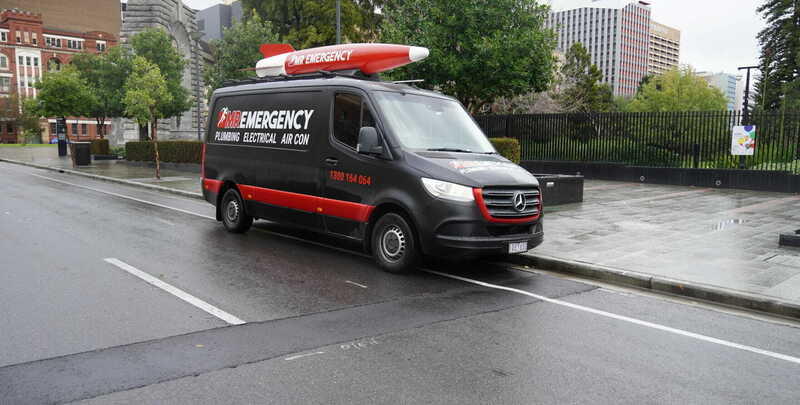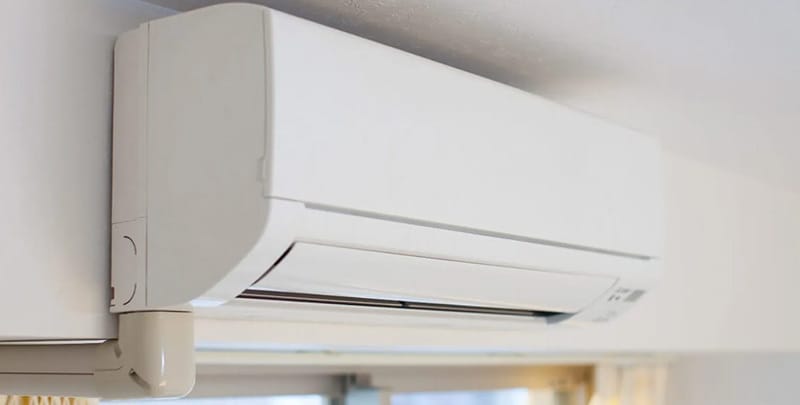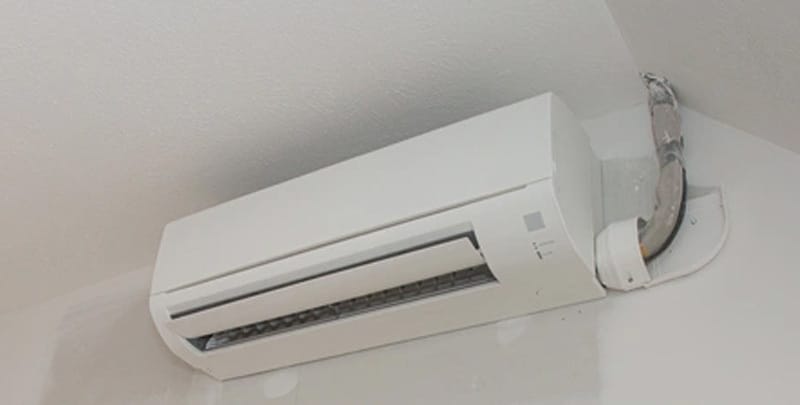
Getting to Know the Ductless Air Conditioner
Ductless air conditioners are becoming increasingly popular in residential settings for those looking for an efficient and versatile home cooling solution. But, like any product, ductless air conditioners have their pros and cons.
In this blog post, we are going to explore those various aspects and reach a verdict on whether or not a ductless air conditioning system is the right choice for your home.
A ductless air conditioner, also known as a mini-split system or a multi-head split system air conditioner, is an air conditioning system that eliminates the need for ductwork in your home.
The ductless mini-split system involves an indoor unit, which is directly responsible for cooling, and an outdoor unit housing the compressor and other components. These units are connected by a refrigerant line, a power cable, and a condensate drain.
What are the Parts of a Ductless Mini-Split System?
A ductless mini-split air conditioner typically consists of the following key components:
- Outdoor unit: This exterior unit is the primary component of the system and is usually installed on the ground or mounted on the wall outside the home. It houses the compressor, which is the heart of the cooling operation, and the condensing coil, where the heat is expelled.
- Indoor unit: These are smaller units that are installed within each room that you want to cool. Each comes with an evaporator coil and a fan. The evaporator coils absorb heat from the room, and the fan distributes the cooled air back into the room.
- Refrigerant lines: These lines connect the indoor units to the outdoor units. They transfer the absorbed heat from the indoor units to the outdoor unit and bring the cooled refrigerant back to the indoor units. These are the channels through which the cooling cycle operates.
- Condensate drain: As the evaporator coil in the indoor unit cools the warm air, it produces condensation. This condensation is removed from the indoor unit through the condensate drain line, preventing any water damage in your home.
- Remote control: Each indoor unit typically comes with a remote control that allows you to independently set the temperature and operating modes for different rooms, providing enhanced comfort and convenience.
These components work cohesively to operate a ductless mini-split air conditioner, providing efficient cooling and enhancing the comfort of your home.
How Does a Ductless Mini-Split System Work?
A ductless mini-split air conditioner is a cooling system that directly cools each room or zone through individual indoor units. Each of these indoor units comes with its own evaporator and fan, which handle the cooling process.
Unlike traditional air conditioning systems that circulate cooled air from a central unit via an extensive network of ducts, a ductless mini-split air conditioner sends cooled or heated air straight into the room.
This direct transfer method eliminates the need for ducts, a feature that gives the system its name – “ductless”.
Further to this, each indoor unit is connected by refrigerant lines to an outdoor unit, which is essentially a compressor. Here’s where we see a cycle in action: The refrigerant lines move warm air from the room to the outdoor compressor.
At the compressor, the air is cooled down and then sent back to the room through the same refrigerant lines. As a result, the room gets cooler as it receives the cooled air while the heat is expelled outside.
In essence, a ductless mini-split air conditioner functions by cooling each room individually where a unit is installed.
Understanding Zones in Mini-Split AC Systems
A multi-head split system’s “zone” refers to individual rooms or segments within a structure that are conditioned by the air-conditioning system. There are two primary configurations for mini-split ACs: single-zone and multi-zone systems.
Single-Zone System:
In a single-zone configuration (aka split system air conditioner), one indoor unit partners with one outdoor unit to condition a particular room or area. This option is ideal when you need to focus on cooling only a specific room or if you have smaller spaces that need temperature regulation.
The installation process for single-zone systems is relatively straightforward, necessitating just a small hole in the wall to link the indoor and outdoor units.
Multi-Zone System:
In contrast, a multi-zone mini-split system cools multiple rooms or sections using a single outdoor unit tied to multiple indoor units.
This arrangement enables the independent temperature control of various areas within a property, making it a valuable option for larger homes or spaces where temperature preferences differ. Multi-zone systems cater to diverse cooling requirements smoothly and efficiently.

Pros of Ductless Air Conditioner
Now that you have a basic knowledge of ductless air conditioners, it’s time to talk about their pros and cons. Let’s start with the pros:
- Better air quality: Unlike traditional HVAC systems that might circulate dust, allergens, and bacteria via ductwork, ductless systems offer multi-stage filtration to reduce airborne pollutants, thus contributing to improved indoor air quality.
- Flexibility: Ductless mini-split systems are highly versatile, allowing you to cool individual rooms or multiple rooms by connecting multiple indoor units to one outdoor unit. This flexibility in cooling is perfect for those with varying room usage or different comfort preferences among household members.
- Easy installation: Installing a ductless air conditioner is generally quicker and less invasive than central systems that require ductwork. A small opening in the wall is made to connect the indoor and outdoor units, and no bulky ducts need to be installed.
- Zone control: Each indoor unit has its thermostat, giving you the ability to set different temperatures in different rooms for customised comfort.
- Energy efficiency: Ductless air conditioners are known for their energy efficiency and can provide substantial savings on utility costs. Traditional central air conditioning systems can lose energy as cooled air moves through the ducts. In contrast, ductless systems transfer cool air directly through refrigerant tubing, eliminating energy losses associated with ductwork.
- Cost-effective: Ductless air conditioners can be a cost-effective cooling solution in the long run, despite their upfront costs. Their high energy efficiency can correlate to reduced energy bills over time.
- Sustainability: Due to their energy efficiency, ductless air conditioners are more environmentally friendly compared to other air conditioning systems. They can help reduce your carbon footprint while maintaining a comfortable indoor environment.
- Adaptable solutions: Being compact and offering unique installation flexibility, ductless air conditioners can be installed in various settings that may not suit conventional central systems, such as older houses, room additions, small spaces, etc.
Cons of Ductless Air Conditioner
While ductless air conditioners offer lots of advantages, they also have a fair share of drawbacks. Here are some of them:
- Limited heating capabilities: Though some ductless air conditioners have heating capabilities, they may not be as effective as a separate heating and cooling system in very cold climates.
- Greater vulnerability: Outdoor units of ductless systems are more vulnerable to damage from severe weather conditions or physical damage due to their installation location.
- Noise levels: While it’s true that mini-split systems are quieter than most window units, indoor units can still produce a fair amount of noise. Noise levels can vary depending on the model, so it’s essential to choose a unit known for its quiet operation if noise is a concern.
- Aesthetics: One of the most common complaints about ductless air conditioners is their appearance. Some homeowners find the indoor units to be visually unappealing or feel they take up valuable wall space.
- Upfront costs: While the operational costs of ductless air conditioners are often lower, there can be significant upfront installation costs, particularly if multiple indoor units are required.
- Maintenance requirements: Ductless air conditioners generally require more regular maintenance compared to traditional systems. The indoor units need to be cleaned periodically to ensure they operate efficiently.
- Lower resale value: Homes with central air conditioning systems generally have higher resale values. Buyers may not be familiar with the benefits of ductless systems, or they may prefer the aesthetics and perceived superiority of central systems.

What are the Rules of Thumb for Ductless Mini-Split Systems?
When it comes to ductless air conditioners, also known as split systems in Australia, there are a few rules of thumb that can help ensure efficient and reliable operation:
Right-Sizing is Essential
Proper sizing of a split system is critical for optimal performance. If the system is too small, it will have to work harder to cool the space, leading to a shorter lifespan and higher energy consumption. Conversely, a system too large will cool the area quickly but may not effectively remove humidity, leading to dampness and potential mould issues.
A professional can help calculate the correct size needed based on factors like room size, insulation, and sun exposure.
Regular Cleaning and Maintenance
Most manufacturers recommend cleaning the filters every two weeks to a month depending on usage for optimal performance and efficiency. Keeping the outdoor unit clear of debris and ensuring the indoor unit’s airways aren’t obstructed can also help maintain efficiency.
Regular professional maintenance, typically once a year, can identify potential issues before they become costly problems.
Suitable Indoor Unit Placement
The indoor units should be installed at a height where airflow can be distributed evenly across the room. They should be placed away from sources of heat or cold to prevent inaccurate readings by the system’s thermostat.
Consideration for Refrigerant Lines
The refrigerant lines, which connect the indoor and outdoor units, should ideally not exceed 15 metres. Longer lines can affect system efficiency, so it’s best to keep the indoor and outdoor units as close as possible without compromising on optimal indoor unit placement.
Zoning and Individual Control
Ductless air conditioners are excellent for creating different climate zones within a home. Think about which rooms need cooling the most and when, and make sure to adjust temperature settings based on occupancy.
Take Professional Help for Installation
Even though installation might appear straightforward, a professional installation will ensure your system is set up correctly, efficiently and safely.
Adhering to these general guidelines can help you get the most from your ductless air conditioner, ensuring efficient operation and a comfortable home environment for years to come.
The Right Professional for Your Ductless Mini-Split Systems
Understanding the pros and cons of ductless air conditioning systems is essential in making an informed decision.
At the same time, consulting a heating, ventilation and air conditioning (HVAC) expert can also help in determining whether a ductless air conditioner is suitable for your needs, considering various factors like the size of your home, local climate, and the desired comfort levels.
The Right Choice for Your Home?
Ductless air conditioners offer numerous benefits, including energy efficiency, flexibility, and easy installation. However, they also have a few drawbacks, such as aesthetics and noise levels.
By carefully considering your home and lifestyle needs, and consulting with an HVAC professional, you can decide if a ductless air conditioning system is the right choice for your home.
Please note: This information is provided for advice purposes only. Regulations differ from state to state, so please consult your local authorities or an industry professional before proceeding with any work. See our Terms & Conditions here.


